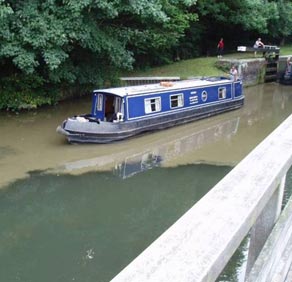Issues of water quality resulting from the impact of the Kennet & Avon Canal on the River Kennet (and River Dun) have been evident since the mid-1990s

There has been much activity since then to try to address these issues, beginning with liaison between the statutory agencies, the planning authorities and developers regarding the impacts of boat movements and marina.
The river and canal share the same channel at a number of locations, with the first permanent connection downstream of Copse Lock (west of Newbury).
Sediments and nutrients in the slow-flowing canal water are stirred up by boats during the summer months. Combined with warmer temperatures this then pollutes the chalk stream where the waters mix.
Nutrients in the canal emanate from both point and diffuse sources including:
- Sewage treatment works
- Wilton Water (water source for the canal)
- Agricultural runoff
The sediment present in the canal derives from a number of sources, some more significant than others, throughout its length including:
- Sewage treatment works
- Feeder streams, some of which operate seasonally such as the large winter input from the Kennet from Sherman’s Hatches
- Overland runoff
- Organic material generated within the canal
- Canal bank erosion
In broad terms, potential actions to improve the canal fall into two categories:
- Improving the quality of water in the canal
- Prevention of mixing of canal and river water, either by full separation or by reducing canal over-spills to the river
The Environment Agency (EA) investigated turbidity issues on the Kennet over a period of time. In 2005 the Kennet Chalk Stream Restoration Project (KCRP) was launched by the EA and partners to investigate and address water quality issues affecting the river, particularly those arising from the canal.

